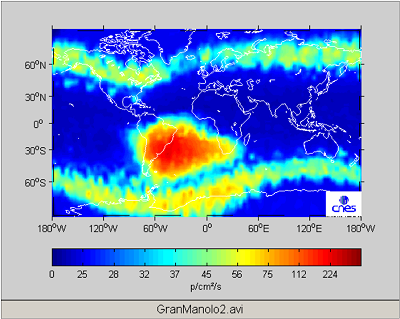Example of Result
Various orbital altitudes and inclinations provide radiation flux maps in different positions in the radiation belts and give input points for model verification and computer simulations.
High inclination missions enable to cross magnetic field lines. Although the flux intensity varies along field lines, flux variations (![]() F/F) may be considered as identical for a given L value. Representations in the L-space can be used for visualizing the dynamics of the whole Belt region.
F/F) may be considered as identical for a given L value. Representations in the L-space can be used for visualizing the dynamics of the whole Belt region.
The radiation belts of the Earth are dynamic structures. Flux variations are linked to particle injection during solar flares and particle transport in the magnetosphere associated with magnetic storms.
Missions at various dates with respect to the solar cycle enable the study of the 11-year modulation of fluxes and the observation of solar event impact on flux dynamics (flares, magnetic storms). Solar events mainly take place during solar maximum but are also encountered during solar minimum. Very high intensity events can appear at the end of solar max periods.
Animated figure from the Icare/SAC-C detectors presents the effect on polar orbit of the April 2001 solar events.
